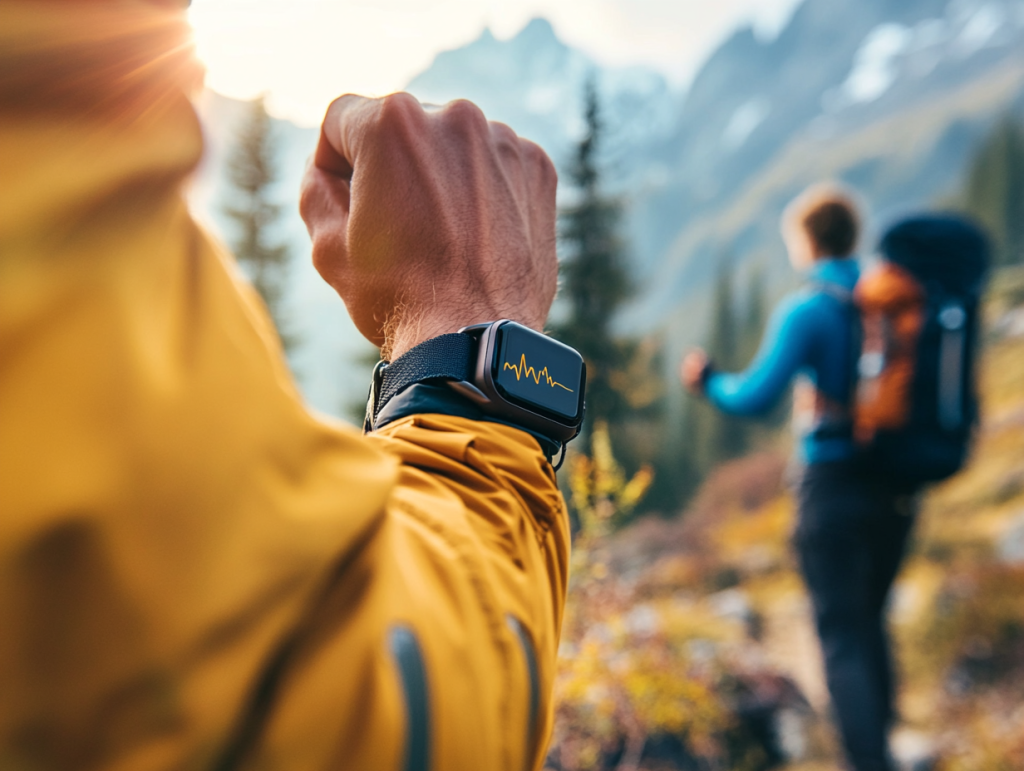When most people get into rucking as a new form of cardio exercise, they tend to fixate on the weight in their pack. “How heavy should I go? Is 20 pounds enough, or should I push for 40?” It’s an understandable thought—after all, rucking is literally walking with weight. The heavier the pack, the harder you’re working, right?
Well, not exactly.
While pack weight does matter, it’s not the most important factor in building fitness and endurance. If you’re sweating bullets but not paying attention to what your heart is doing, you might be missing the bigger picture—and even setting yourself up for setbacks like overtraining, fatigue, or injury.
Or, you may be wasting your time rucking for 2-3 hours at an average heart rate of only 80 BPM. That is great for sightseeing but not so great for building cardio fitness.
This guide is all about shifting your focus from what’s in your pack to what’s happening inside your body.

The Importance of Heart Rate in Rucking
First things first: rucking is a cardio workout. Sure, it also builds strength, but at its core, rucking is about moving your body while carrying weight, which makes your heart and lungs do the heavy lifting. That’s why keeping tabs on your heart rate is crucial—it’s the best way to measure how hard your body is working and make sure you’re staying in the sweet spot for progress.
Now, when we talk about heart rate, we’re not just saying “make sure your heart is beating.” We’re talking about heart rate zones. These are ranges based on your maximum heart rate (a rough estimate is 220 minus your age). Each zone has a specific purpose when it comes to fitness:
- Zone 1 (Resting): Think Netflix and chill mode. For most people, this is anything below 115 BPM.
- Zone 2 (Fat-Burning): Easy, steady effort. Perfect for beginners or long, slow rucks where endurance is the goal. For most people, this is between 115-130 BPM.
- Zone 3 (Aerobic): Moderate intensity. You’re pushing yourself, but you can still carry on a conversation. Great for building stamina. For most people, this is between 130-145 BPM.
- Zone 4 (Anaerobic): High intensity. You’re huffing and puffing, and talking becomes tough. Use sparingly for speed rucks or hill work. For most people, this is between 145-160 BPM.
- Zone 5 (Max Effort): Sprint-level work. Think of this as “all-out” mode, but you won’t last long here. For most people, this is above 160 BPM.
**Side note: I am not your doctor; these are heart rate zone estimates based on the general public.
For most rucking sessions, you want to hang out in Zone 2 or 3. These zones improve your endurance and help your body use fat as fuel, which is way more efficient than relying on quick-burning carbs. Plus, they’re sustainable—you’ll finish your ruck feeling like you’ve worked, but not like you need to call an ambulance.
Why does this matter? Well, if your heart rate is too low, you’re not challenging your body enough to see results. But if it’s too high, you’re working inefficiently, burning out your glycogen stores, and setting yourself up for fatigue—or worse, injury.

Common Misconception: Heavier Weight Means Better Results
Let’s tackle one of the biggest myths in rucking: the idea that heavier weight automatically equals better results. A lot of new ruckers think, “If I can carry more, I’ll get stronger and fitter faster.” It sounds logical on the surface, but in reality, piling on the weight can do more harm than good.
Why People Fixate on Weight
It’s easy to see why weight becomes the obsession. Rucking is, after all, a weighted workout. And hey, we’re conditioned to think more effort equals more reward. You might feel like carrying a 80-pound pack shows grit, toughness, or progress. But here’s the catch: fitness isn’t just about how much you can suffer. It’s about how well your body adapts to the stress you’re putting on it.
When you focus only on the weight, you’re ignoring a ton of other factors that contribute to better performance—like your form, pace, endurance, and, yes, your heart rate.
The Downsides of Overloading
Here’s what happens when you push the weight too soon or too much:
- Increased Risk of Injury
Heavy weight throws off your posture and form, putting unnecessary strain on your back, shoulders, and knees. Over time, this can lead to chronic issues like joint pain, muscle imbalances, or even serious injuries. - Bad Form = Inefficiency
When your pack is too heavy, your body naturally compensates by slouching, leaning forward, or taking shorter strides. Not only does this make rucking harder, but it also robs you of efficiency. Your muscles and joints end up doing more work than they should, and your cardio benefits take a hit. - Diminishing Returns
There’s a point where adding weight doesn’t give you the payoff you think it will. Sure, you’re working harder, but your heart rate skyrockets, and your endurance plummets. You’re no longer building sustainable fitness—you’re just grinding yourself down. - Mental Burnout
Let’s be real: rucking with too much weight sucks the fun out of it. If every step feels like a slog, you’re more likely to quit before you’ve built the consistency that leads to real progress.
Why Less Weight + Heart Rate Focus Is Better
Instead of trying to max out the weight in your pack, think about finding the right balance. Start with a weight you can carry comfortably for at least 30–45 minutes while keeping your heart rate in Zone 2 or 3. For most people, that’s somewhere between 10–30% of your body weight.
Remember, rucking isn’t about proving how much you can carry in one go—it’s about long-term fitness gains. You’ll build more strength and endurance by staying consistent and gradually increasing your weight over time, all while keeping your heart rate in check.
So, if you’ve been lugging around that 40-pound pack and feeling like death halfway through your ruck, it’s time to rethink your approach. Drop the weight, monitor your heart rate, and watch how much farther (and healthier) you can go.



